How much it would cost to build your own Animal Crossing island?
Animal Crossing, Nintendo’s flagship island life simulator, is providing millions of people worldwide with a serene social spot, sheltered from the uncertainties of modern life. The game’s whimsical approach does away with the boss fights and timed tasks that are typical in other video games – in fact, it places no obligations on players whatsoever.
You’re supposed to build a house (after entering a mortgage deal with an anthropomorphic racoon called Tom Nook), decorate it to your taste, and generally work towards developing your very own tropical paradise. But apart from that, the world is your oyster - an appealing prospect in today’s modern world!
As procurement specialists, we couldn’t help but consider what it would cost to purchase and develop a peaceful Animal Crossing-style island in real life, including everything that would be needed for a comfortable life.
Paradise found
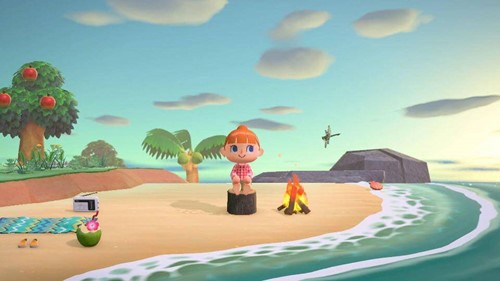
But before we get to that, a bit about Animal Crossing. It’s the latest title from gaming behemoth Nintendo, where you’re whisked away to an idyllic island to begin a fresh life. Here, you’ll meet Tom Nook, a potbellied real estate tycoon racoon – yes, you read that right – who issues you a loan to develop your island.
Your slice of paradise is sparse to begin with, and you’ll be sleeping in a tiny yellow tent on your first night, just around the corner from a multiplayer-enabling airport, which allows real-life players to visit each other’s rural paradises.
There’s an abundance of natural beauty to see, but most of it is obscured by crashing rivers and jagged cliffs. So, when do things start to happen? Well, there lies the beauty of Animal Crossing: your new virtual life starts at your own pace.
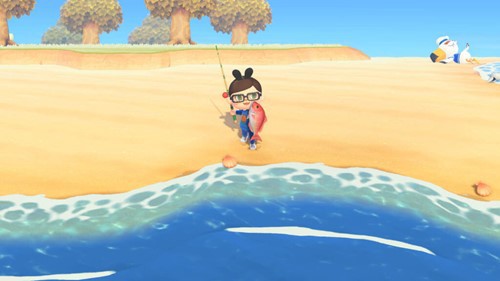
You can do pretty much anything you want on your island, but as is often the case, making money is many players’ core objective. Amassing ‘bells’, the game’s currency which are roughly equivalent to Japanese yen in value, can be done in numerous ways.
Fishing, for example, allows you to earn bells by the dozen, and the rarer your catch, the more it will be worth. Your well-earned catches can also adorn the walls of the local museum, providing scores of scales to view, if that’s your thing.
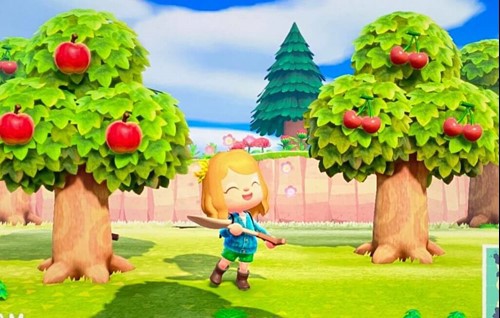
You can also grow magic money trees by digging patches of golden grass, while fruit regrows on the vine every 48 hours (in real-time), which you can then sell to Tom Nook for a tidy sum.
Nook’s entrepreneurial spirit might even rub off on you, leading you to other money-making schemes like fossil finding, bug hunting, and recycling. And if you’re strapped for cash or at a loose end, you can always shake a tree.
Seriously, random trees contain 100 bells, up to a total of 2,500 bells. Be careful though, bees also have a penchant for tree bells, and a sting from one of them will cost you 400 bells in medical fees.
Costs for setting up an island
If you wanted to establish your own serene tropical paradise a la Tom Nook, what would it take? Well, the first thing you’d need is an island…
Your own tropical island

With a name that evokes Animal Crossing’s ‘can do’ attitude, the Maldivian island of Kandoo shares striking similarities in size, ecology and local amenities. Located relatively close to its neighboring islands, allowing for travel between them like in Animal Crossing, it’s also far enough away to provide the blissful solitude that characterizes the game.
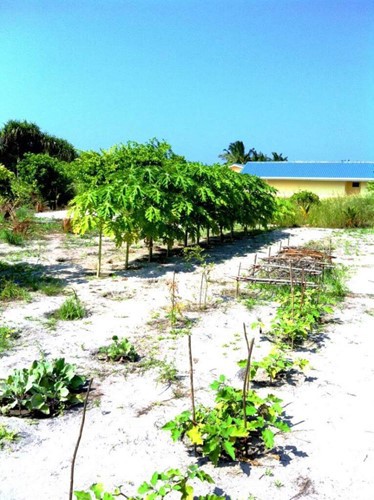
Mirroring Animal Crossing’s 42-acre island of luscious green pastures and coral reefs, Kandoo offers organic fruit production and a barrack for crafting materials, tools and equipment. How much does this little slice of paradise cost? Private Islands Inc have told us that it could be yours for a tidy $7.5 million USD – or £6.1 million!
Housing
With tools in hand, you’re ready to shape a charming, functional home that strikes a close resemblance to the in-game homes. Let’s unpack the Animal Crossing building method before crunching the numbers and finding out how much money you’d need to procure a charming bungalow like this one.
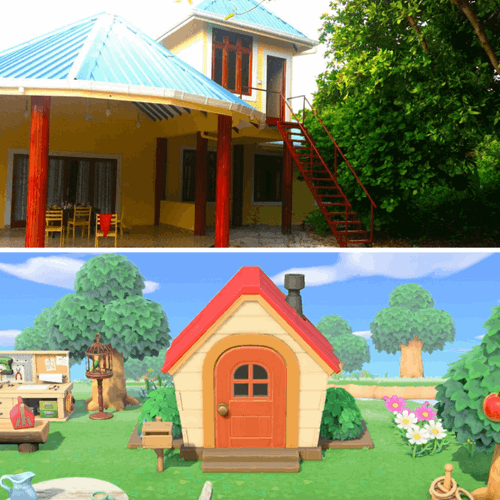
To build a house in Animal Crossing, you first need to visit Tom Nook to enquire about a home loan, which you can only do after two full days on the island. After agreeing a price of 98,000 bells (around £750, using the bells/yen comparison), which you’ll pay back in manageable increments, Tom Nook will build your house.
While your first house will be modest, comprising of a pretty brick building with one small room, Nook will be on hand to offer you further loans to furnish your surroundings – and deplete your wallet. Armed with extra funds, you can expand your modest dwelling into a house that features four rooms, a second storey, and a basement to store your items.
Expanding your home costs a reasonable 198,000 bells (~£1500), with each additional room costing 398,000 bells (~£3000), bringing the total cost of a fully upgraded house to 5,696,000 bells (~£43,000).
Over on Kandoo Island, on the other hand, you could invest in a large modular kit house featuring five rooms and a mezzanine loft. This arrangement would set you back somewhere in the region of £85,850, twice what a home costs in Animal Crossing.
Private airport and plane
The Dodo Airlines airport is one of only two buildings that exist on the island at the beginning of the game. Dodo Airlines functions as a multiplayer hub in which real-life players can visit one another’s island. The building also offers mystery tours where players can visit neighboring islands to forage for exotic fruits and materials like bamboo.
If you were interested in taking up some inter-island foraging from your new home on Kandoo Island, you’d likely need a waterplane and a small airport.
Luckily, you can bag a carbon-fiber seaplane for around $250,000 (£202,175), while a Sport License requires just 20 hours of in-flight training, so you’ll be racking up those Nook miles in no time.
Airports cost roughly $30m per 3km of runway but your island doesn’t need a runway as you’ll be landing on the water! So, we estimate that just building the small airport terminal on Kandoo would cost approximately £48,596 + £15,000 in fittings, bringing the combined total of the airport and waterplane to around £265,711.
Resident Services
The Residents Services building in Animal Crossing provides facilities to make island life easier. You’ll find a DIY workbench, a shop, and the Nook Stop terminal. Resident Services consists of a brick building which houses two desks, along with storage facilities for two full-time employees.
The building is manned by two employees – Tom Nook and Isabelle – who are on hand to provide information. Nook specializes in practical matters, such as loans and construction, while Isabelle offers insight into residents’ lives as well as the island’s history.
With the building, facilities and employees in mind, we estimate that building a suitable office with the necessary facilities would cost around £2,140psqm, while the average UK council worker salary comes in at £37,500. With these figures in mind, we estimate that building a 70sqm resident services facility for your island would cost around £149,800 (plus a further 20% for further works and fittings) and paying two full-time salaries would add on an additional £75,000.
Shops
There are two main shops on the Animal Crossing island to begin with – Nook’s Cranny and The Able Sisters.
Resembling a wooden shed, Tom Nook’s ‘Nook’s Cranny’ shop is a series stalwart, recurring in all but one version of the game. Here, you’ll find a vast array of items including tools, seeds, and saplings; as well as ready-made furniture and household items that cannot be crafted using DIY tools. The building is small in stature, measuring approximately 8 x 6m², which equates to roughly £24,000 in expected building costs. Add on 20% for further works and fittings, and the figure rises to £28,800.
The shop also employs two shopkeepers, who according to our research, probably earn an average of £17,989 p.a., totaling £35,978 in annual salary costs.
Mable and Sable, the island’s seamstress/shopkeeper sisters, run the Able Sister’s shop. Here, players can try on and purchase clothes and accessories. In the real world, the salary of a seamstress and a shopkeeper comes to £38,325, while the building, measuring approximately 90m², would likely cost around £45,000 in materials.
Adding 20% to account for further work and labor, the figure rises to £54,000, which takes the final cost to approximately £92,325.
Total costs
It’s time to total up the costs involved in establishing your own tropical island paradise. Here’s what we think you’d need to get started:
|
Purchase |
Cost |
|
Kandoo Island |
£6,141,787.50 |
|
Modular kit house x 10 |
£1,030,200 |
|
Seaplane |
£202,175 |
|
Airport terminal |
£63,596 |
|
Resident services building |
£179,760 |
|
Resident services staff salaries (p.a.) |
£75,000 |
|
Nook’s Cranny shop building |
£28,800 |
|
Nook’s Cranny staffing costs (p.a.) |
£35,978 |
|
Able Sister’s shop building |
£54,000 |
|
Able Sister’s staffing costs (p.a.) |
£38,325 |
|
Total |
£7,872,957.50 |
Animal Crossing sales during the Coronavirus crisis
The success of Nintendo’s latest Animal Crossing title, New Horizons, has been unprecedented. The game sold over 11 million copies within 11 days of its release, becoming Nintendo’s highest ever selling game during the first month of launch, outstripping benchmark titles such as Super Mario and Pokémon. The startling sales also exceeded the total earnings of the previous four Animal Crossing titles – and its three spin-offs – combined.
Released on March 20th, 2020, the fifth iteration of the game entered the market at a particularly turbulent time as the Coronavirus pandemic peaked. Europe had all but shut its doors, and by April 12th, the US, Canada, and Japan had followed suit.
Hero of quarantine gaming
Its little wonder why people have taken the serene life simulator to their hearts. While our supermarkets were short of essentials like soap and loo roll, the game’s shop, Nook’s Cranny, was packed to the rafters with everything from rice cookers and rain boots to exercise equipment – everything required to start a new life in a distant, tropical paradise.
There is also an abundance of places to roam, lovable characters to meet, new clothes to buy, and exciting activities to try. On the surface, it provides a timely ‘slice of life’ antidote to the pandemic; on closer inspection, it offers a nostalgic insight into life as we knew it just two months ago.
Animal Crossing’s soothing combination of material abundance, languid loan schemes and endless employment opportunities has given us much-needed refuge. And as with any cultural explosion in the digital age, social media was quick on the uptake.
On 6th April, 100 Thieves - the lifestyle and esports brand whose exclusive clothing lines usually sell out within minutes - unveiled virtual garments at the game’s Able Sister’s kiosk, setting the game’s hashtag, #AnimalCrossingDesigns alight.
The game’s global social media impact includes dedicated YouTube channels, trending Twitter hashtags, and Facebook groups - not to mention a charming eBay-like marketplace where players trade Animal Crossing items.
Meeting at the intersection between escapism and real global concerns, Animal Crossing has lifted the restrictions we often impose on ourselves by placing us at the heart of its narrative.
Animal Crossing and procurement
You might be asking yourself what Animal Crossing has to do with us, or procurement in general. Why did we write this piece? Well, we see procurement as something that’s present in pretty much every aspect of the world, and the virtual world is no different.
In the process of building your perfect tropical paradise in Animal Crossing, you get into the mind of a procurement professional. From managing your cashflow to make sure you have enough bells to keep your development plans going to sourcing the right materials to build your dream island with, it’s all essentially procurement.
Taking that concept out of the world of New Horizons and into the real world lends a bit of perspective, can be educational, and, above everything else, it’s fun!





